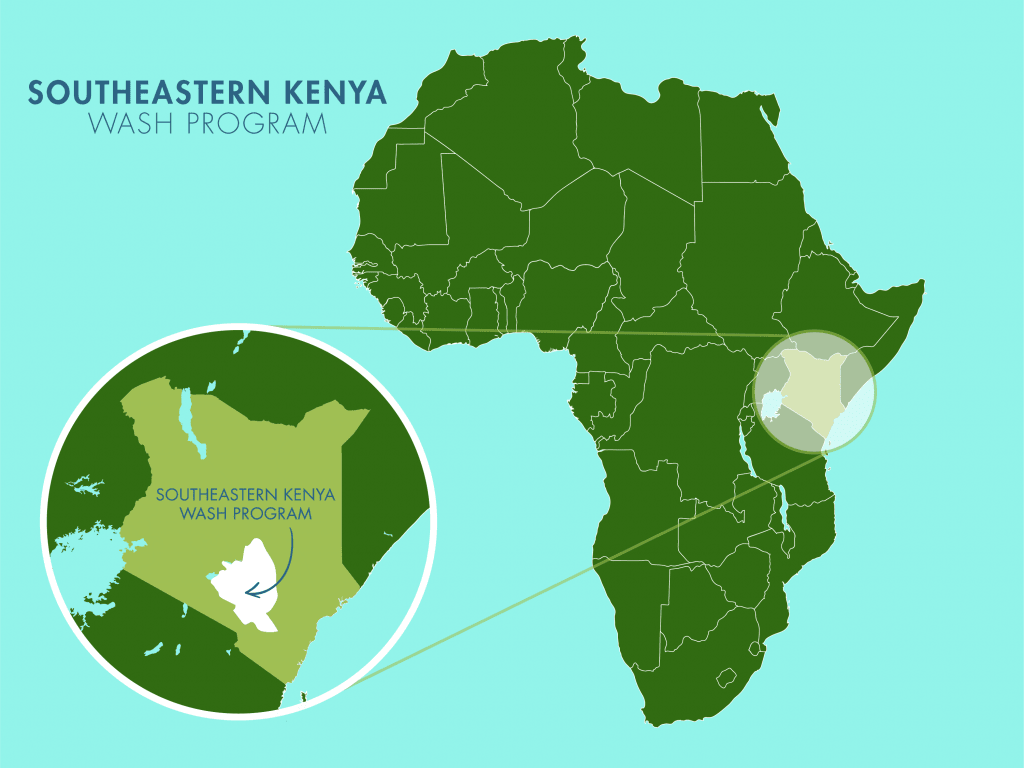The Kasevi Kyamboo Community is home to over 1,200 residents who face daily hardship in their search for water. The community currently depends on a distant, open surface water source that is unsafe, seasonal, and contaminated.
Fetching water often takes between two to four hours per trip, with residents, mostly women and children, walking long distances through rocky, steep terrain under the scorching sun. This exhausting task leaves little time for farming, studying, or other productive activities.

The contaminated earth dam water source.
The available water is visibly polluted, with a greenish color, foul smell, and salty taste. During dry seasons, the source often dries up completely, forcing families to seek water in neighboring villages, which increases strain and conflict over the scarce resource.
"Most community members often complain of various gastrointestinal issues such as stomach aches, nausea, vomiting, and diarrhea after drinking the available water at the earth dam," Field Officer Alex Koech shared.
17-year-old Victor is responsible for collecting water for his family. It is a burdensome task since the water source is kilometers away from his home, but his family relies on him for help.

Victor.
"I feel tired even before I leave. The walk is long and difficult, especially under the hot sun. Sometimes I feel disappointed because I know I could use that time to study, help at home, or just rest," lamented Victor.
"The earth dam dries up during the dry season, and when it does have water, it’s shared by too many people. It makes me feel helpless and frustrated because we can't rely on it. Sometimes we even have to skip important tasks just to fetch a little water," he continued.
Victor has concerns about collecting contaminated water that risks his health, "I’m worried because the water we fetch from the earth dam is not clean or protected. Sometimes, animals drink from it and defecate nearby, and that makes it easy for the water to get contaminated. I’ve seen people, including children, fall sick after drinking it. We have no guarantee that what we carry home is safe, and that worries me."

Victor uses a donkey to haul water.
Victor has dreams for the future: "I hope to become an engineer. I’ve always been interested in building things and solving problems in the community."
"A new, protected waterpoint will mean we no longer have to use dirty or unsafe water. It will reduce the risk of illnesses like typhoid and amoeba, and we won’t have to travel long distances in the sun and on steep paths. Knowing I’m getting clean water close to home would make me feel safer and give my family peace of mind," concluded Victor.
Solving the water crisis in this community will require a multifaceted system that will work together to create a sustainable water source that will serve this community for years to come. We plan to install a well attached to a sand dam so he can access clean, safe water near his home and focus on the other, more essential things in life.
Note: Our proposed water point can only serve 300 people per day. We are working with the community to identify other water solutions that will ensure everyone has access to safe and reliable drinking water.
Steps Toward a Solution
Our technical experts worked with the local community to identify the most effective solution to their water crisis. Together, they decided to construct a protected dug well and sand dam.
Protected Dug Well Near A Sand Dam
Once a sand dam is installed and has time to mature by gathering sand and silt, groundwater increases significantly in the entire area surrounding the project. This provides a reliable source of groundwater that wasn’t possible before. As a result, wells can be constructed to take advantage of the water stored and filtered in the collected sand.
During the construction of the protected dug well, we will build a platform for the well and attach a hand pump. The community will gain a safe, enclosed water source capable of providing approximately five gallons of water per minute.
This protected dug well will be connected to a sand dam to obtain water.
Community Education & Ownership
Hygiene and sanitation training are integral to our water projects. Training is tailored to each community's specific needs and includes key topics such as proper water handling, improved hygiene practices, disease transmission prevention, and care of the new water point. Safe water and improved hygiene habits foster a healthier future for everyone in the community.
Encouraged and supported by our team's guidance, the community elects a water user committee representative of its diverse members. This committee assumes responsibility for maintaining the water point, organizing community efforts, and gathering fees to ensure its upkeep.

 Protected Dug Well
Protected Dug Well
 Rehabilitation Project
Rehabilitation Project


















